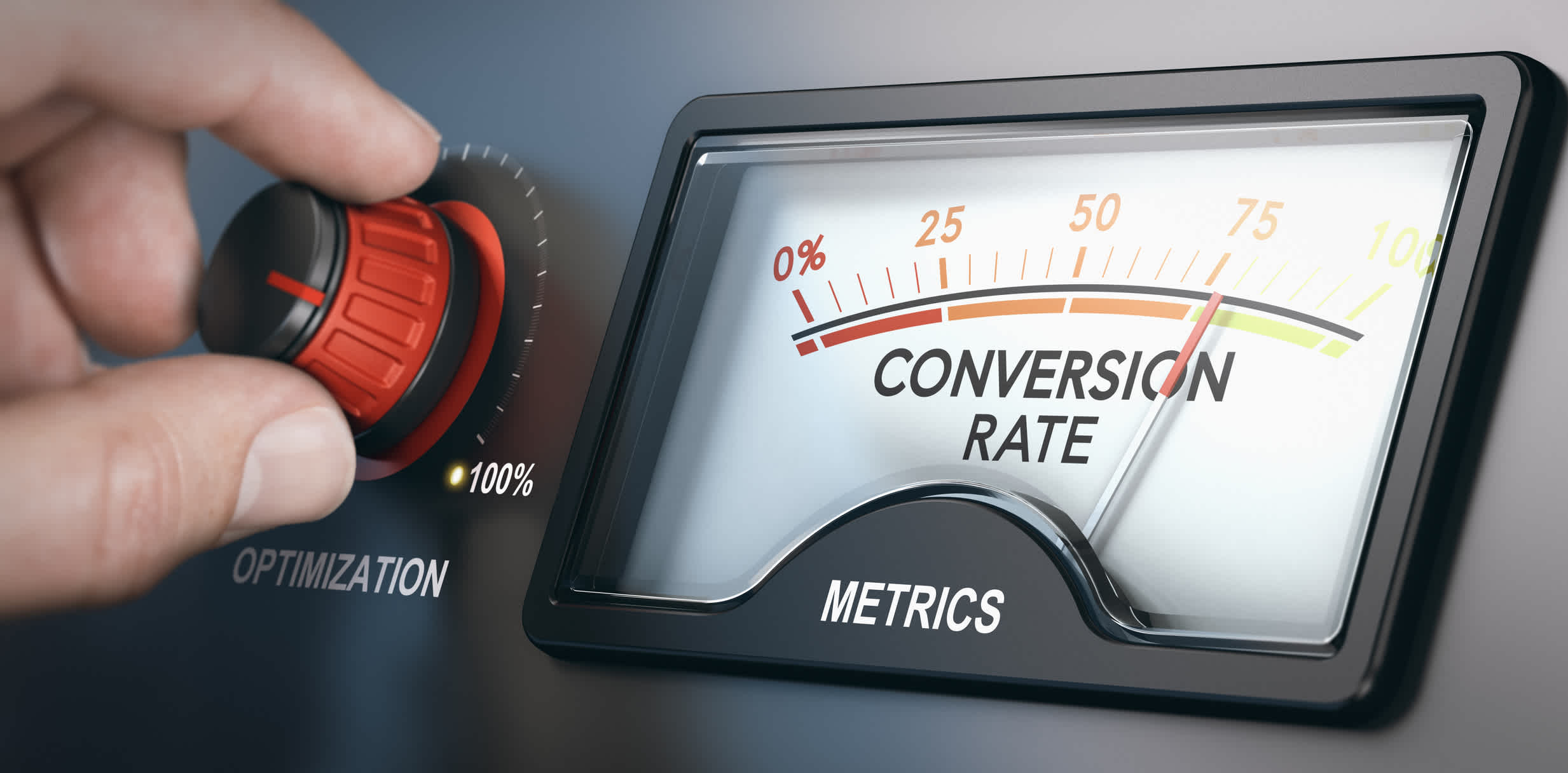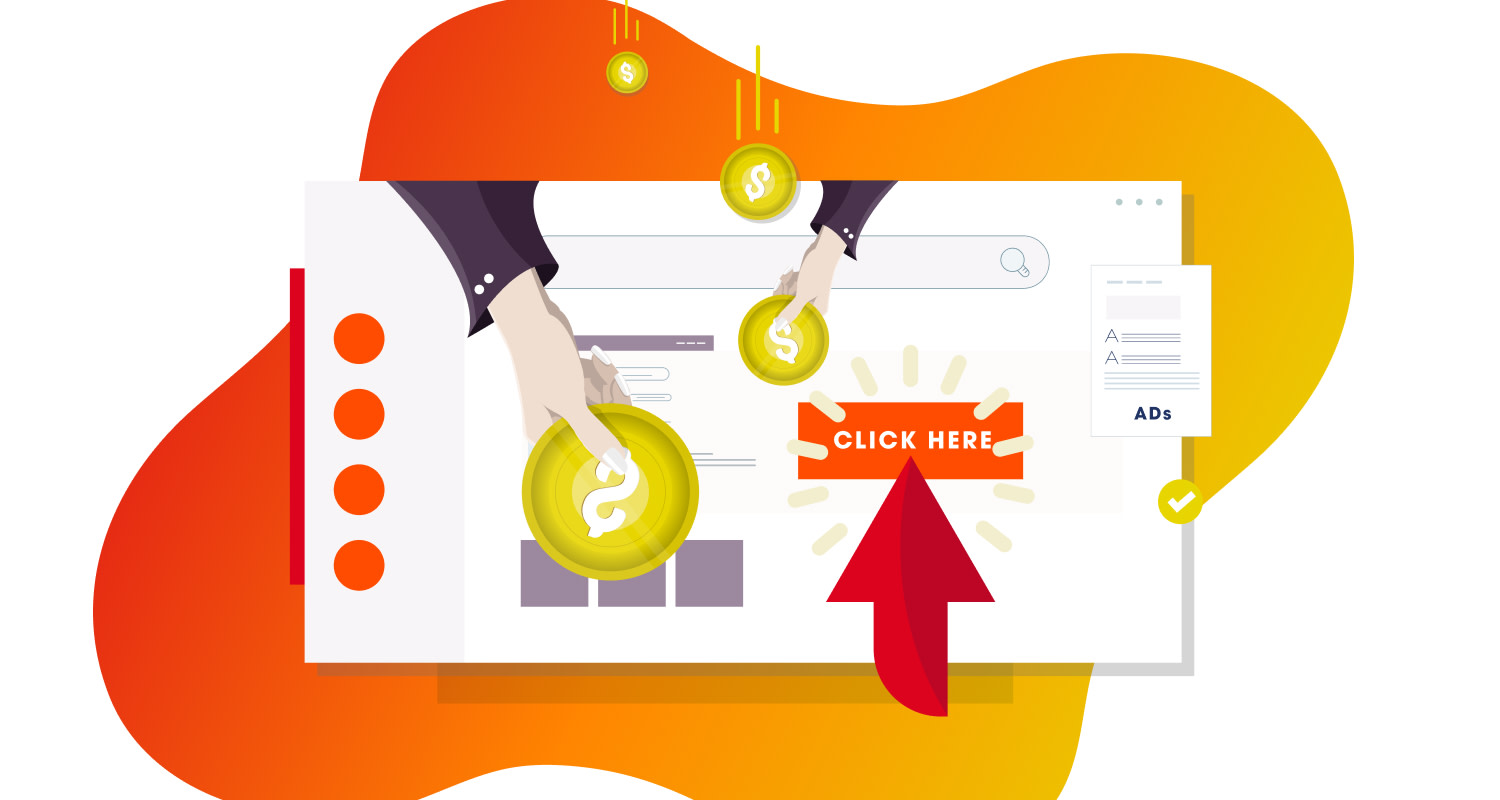//
Apr 24, 2023
Navigate Paid Search Like a Pro: The 5 Essential KPIs Every B2B Marketer Needs to Track
Without the right set of key performance indicators (KPIs), B2B marketers risk wasting valuable resources on campaigns that may not generate meaningful results.
As more and more businesses turn to paid search to generate leads and drive conversions, tracking the right B2B marketing KPIs to ensure campaign effectiveness and drive better results has become increasingly important.

Tracking the right marketing KPIs can provide insight into what's working and what isn't, allowing B2B marketers to make data-driven decisions that improve campaign performance.
Tracking Your Progress: The Five Most Important B2B Marketing KPIs for Paid Search Campaigns

This blog post will discuss the five essential KPIs B2B marketers should track in their paid search campaigns:
- Click-through rate (CTR)
- Conversion rate (Conv. Rate)
- Cost per click (CPC)
- Return on Ad Spend (ROAS)
- Customer Lifetime Value (CLV)
By understanding and following these KPIs, B2B marketers can gain valuable insights into the effectiveness of their campaigns and make informed decisions to optimize performance and drive better results.
1. Click-Through Rate: Why it Matters and How to Improve it
Click-through rate (CTR) is a crucial B2B marketing KPI to track in your paid search campaigns.

Why CTR Matters
The CTR, or click-through rate, measures the percentage of users who click on an ad after seeing it. It is calculated by dividing the number of clicks on an advertisement by the number of times it was displayed.
Impressions / clicks = CTR
Because the clickthrough rate (CTR) measures how well an ad appeals to potential customers, it is important to determine whether or not your ads are effective.
For instance, a high CTR means the ad resonates well with the target audience or targeted keywords, leading to a higher likelihood of conversion.
On the other hand, a low CTR indicates that the ad may not be effectively reaching or engaging with the intended audience, resulting in lower ad effectiveness and potentially higher costs.
How to Improve Your Paid Search CTR
Here are some tips for improving CTR in paid search campaigns:
1. Write Compelling Ad Copy: The ad copy should be clear, concise, and compelling. It should highlight the unique value proposition of the product or service and include a call-to-action that encourages users to click on the ad.
2. Use Relevant Keywords: Use relevant keywords in the ad copy and ensure they are included in the landing page. This helps to ensure that the ad is shown to the right audience and increases the likelihood of a click.
3. Utilize Ad Extensions: Ad extensions such as site links, callouts, and structured snippets can provide additional information and improve the visibility and appeal of the ad.
4. Test and Refine: Continuously refine ad copy and targeting to optimize performance. This can include A/B testing ad variations and adjusting targeting parameters to ensure the ad is shown to the most relevant audience.
By improving CTR, B2B marketers can increase the effectiveness of their paid search campaigns and drive better results. It's important to remember that CTR is just one of several KPIs that should be tracked and used to evaluate campaign performance.
2. Conversion Rate: Turning Clicks into Conversions
Although you know the importance of driving conversions through your paid search marketing campaigns, do you have a way to measure and evaluate campaign success?

That's where the conversion rate (conv. rate) KPI comes in.
Why Conversion Rate Matters
The CR KPI measures the percentage of users who complete a desired action after clicking on your ad. This could be anything from filling out a form to making a purchase. A high CR means that your ad effectively drives users to take the desired action, while a low CR suggests there may be issues with your landing page or call-to-action.
The conversion rate is the ratio of the total number of conversions to total visitors. For instance, if your website received 100 visitors and five made a purchase, that would be 5%.
Why is conversion rate vital for your paid search campaigns?
Without this crucial metric, you can't tell if your campaigns are working—and without that understanding, it's like throwing money away.
For example:
- If you have a high conversion rate, your ads are relevant to your target audience or keywords, and your landing page is compelling enough to convince them to take action.
- On the other hand, if your conversion rate is low, you need to improve your ad targeting, keywords, and landing page to convert more visitors into customers.
Here are 3 areas of focus to help you improve your conversion rate
- Optimized landing pages
For effective advertising, ensure the landing page reflects the ads, has clear content, uses images/videos, and has intuitive calls-to-action for maximum user interaction.
- Use clear calls-to-action (CTAs):
Make your CTAs clear and noticeable. Use phrases like "Sign up now" or "Get started" to encourage visitors to take action.
- Test different ad copies:
Try different ad copies to see which one resonates with your target audience. A/B testing can help you determine which ad copy is most effective at driving conversions.
Don't neglect the power of the conversion rate KPI in your B2B paid search campaigns. By tracking and optimizing this metric, you can turn clicks into conversions and drive real business results.
3. CPC: What is Cost Per Click and How to Reduce It
CPC stands for Cost per Click, which is a metric used in paid search campaigns to measure the cost an advertiser pays for each click on their ad. In other words, it's the price an advertiser pays to the search engine each time a user clicks on their ad.
CPC is important in paid search campaigns because it directly impacts an advertiser's budget and ROI. By understanding the cost per click, advertisers can optimize their campaigns to ensure they are getting the most out of their budget.
Additionally, by monitoring the CPC, advertisers can identify areas where they may be overspending or underperforming, allowing them to make adjustments to improve campaign performance.
Ultimately, tracking CPC helps advertisers maximize their return on investment and achieve their marketing goals.

Ensure your campaign stays profitable with these four steps
Refine Your Keywords:
One of the primary reasons for a high CPC is a broad set of keywords. Refining your keyword list to target only those that are relevant to your product or service can significantly reduce your CPC. This not only improves your ad relevance but also ensures that your ads are shown to the right audience.
Improve Your Ad Quality:
The better your ad quality, the lower your CPC will be. Ensure your ad copy is relevant, engaging, and stands out from the competition. Use ad extensions such as site links, callouts, and structured snippets to provide additional information to potential customers.
Increase Your Quality Score:
Quality Score is a metric that measures the relevance of your ads, keywords, and landing page. Improving your Quality Score can lead to a lower CPC, as Google rewards ads that are more relevant to the user. Focus on creating high-quality landing pages, using targeted keywords, and ensuring your ad copy matches your landing page content.
Use Negative Keywords:
Negative keywords are search terms that you don't want your ads to appear for. Adding negative keywords can reduce irrelevant clicks, which can lower your CPC and improve your overall campaign performance.
Optimize Your Bids:
Bid optimization is a continuous process that involves adjusting your bids based on your campaign performance. Focus on maximizing your ad spend by bidding on high-converting keywords and reducing bids on low-performing ones.
4. Increase Your ROI: Improve Your Return on Ad Spend ()
ROAS stands for "Return on Advertising Spend," which is a metric used to measure the effectiveness and profitability of paid search campaigns. It calculates the revenue generated from the campaign divided by the cost of advertising. The resulting figure represents how much revenue was earned for each dollar spent on advertising.
ROAS is an essential metric for B2B marketers as it helps them understand the actual return they are getting on their investment. By measuring ROAS, marketers can determine which campaigns are profitable and which ones are not.
This information enables them to adjust their paid search strategy, allocate budgets more effectively, and optimize their campaigns to maximize their return on investment. Ultimately, monitoring ROAS helps B2B marketers to make data-driven decisions and ensure their paid search campaigns are delivering a positive ROI.
Here are some tips to help you maximize your ROAS:
Target High-Value Keywords:
To maximize your ROAS, prioritize keywords that are more likely to lead to conversions and generate higher revenue. Conduct thorough keyword research to identify high-value keywords that align with your business goals and target audience.
Optimize Your Bidding Strategy:
Set bids based on the value of each keyword and adjust them according to performance to make the most of your budget. Use automated bidding strategies, such as target ROAS, to ensure that your bids are optimized for maximum return on investment.
Improve Ad Relevance:
Improving ad relevance can help increase click-through rates, reduce bounce rates, and ultimately improve your ROAS. Ensure your ad copy is relevant, engaging, and aligns with the user's search intent.
Use Ad Extensions:
Ad extensions provide additional information about your business, such as phone numbers, location, and reviews. They not only improve ad visibility but also increase the likelihood of conversions, thereby improving your ROAS.
Monitor and Optimize Your Landing Pages:
Continuously monitor and test your landing pages to improve their performance and maximize your ROAS.
5. Increasing Your CLV: Strategies for Boosting Your Profits

Customer Lifetime Value (CLV) is a crucial B2B marketing KPI. It measures the total revenue a customer is expected to generate over their lifetime of doing business with your company. By increasing your CLV, you can maximize the profitability of your paid search campaigns, as loyal customers tend to be more valuable over the long term.
Here are some tips to help you improve your CLV:
Use Remarketing Campaigns:
Target customers who have already shown interest in your products or services through remarketing campaigns. Remarketing campaigns can help encourage repeat purchases, and they tend to be more cost-effective than acquiring new customers.
Provide Excellent Customer Service:
Excellent customer service is essential for building customer loyalty and encouraging customers to return. Ensure your customer service team is knowledgeable, friendly, and responsive to customer inquiries and concerns.
Offer Personalized Recommendations:
Offering personalized recommendations based on a customer's previous purchases or browsing history can help encourage repeat purchases and increase CLV. Use data and analytics to identify customer behavior patterns and preferences and tailor your recommendations accordingly.
Provide Loyalty Programs:
Implement loyalty programs to reward customers for repeat purchases and encourage them to continue doing business with your company. Offer exclusive discounts, rewards, or special offers to incentivize customers to return.
Upsell and Cross-Sell:
Upselling and cross-selling can help increase the value of each customer's purchase and improve CLV. Offer complementary products or services to encourage customers to spend more with your company.
Conclusion
Optimizing the Impact of B2B Paid Search Campaigns through Effective KPI Tracking and Digital Marketing Partnerships
In conclusion, tracking the right B2B marketing KPIs is crucial in ensuring effective paid search campaigns.
Click-through rate, conversion rate, cost per click, return on ad spend, and customer lifetime value are the essential KPIs that should be tracked to drive better results. By improving these KPIs, B2B marketers can increase the effectiveness of their campaigns and drive better results.
We know that small businesses often struggle to stay up-to-date with the latest trends in paid ad campaigns, branding, and marketing. This can be especially challenging if they lack the resources to hire an in-house team.
If you can relate to this struggle, it may be beneficial to consider partnering with a digital marketing agency. These agencies can help businesses navigate the constantly evolving digital marketing landscape, optimize their campaigns, and ultimately drive growth for the business.







